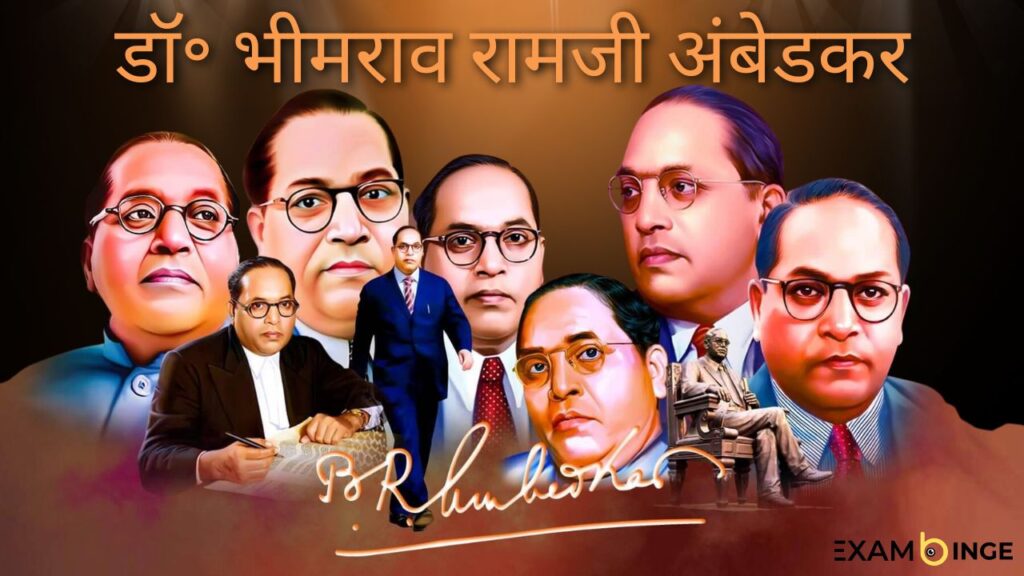Dr. Bhimrao Ramji Ambedkar, popularly known as Babasaheb Ambedkar, was a visionary leader who shaped modern India. His life story, marked by immense struggles and remarkable triumphs, continues to inspire millions worldwide. Let’s explore his journey, legacy, and Dr. Bhimrao Ramji Ambedkar Biography in detail.
Early Life: Overcoming Adversity
Dr. Ambedkar was born on April 14, 1891, in Mhow, Madhya Pradesh, into a Dalit family. At that time, Dalits faced severe discrimination and were considered “untouchables,” deprived of basic rights. Despite these societal barriers, Ambedkar’s father, Ramji Maloji Sakpal, emphasized the importance of education. This foundation enabled young Bhimrao to rise above the constraints of his caste and pursue excellence.
Education: A Path to Empowerment (Dr. Bhimrao Ramji Ambedkar Biography)
Dr. Ambedkar’s educational journey was nothing short of extraordinary. He completed his early schooling under challenging conditions, often studying under streetlights. Later, he became the first Dalit to attend Elphinstone College in Bombay. His academic excellence earned him scholarships, which allowed him to pursue higher education abroad. He obtained multiple degrees, including:
- A Master’s and Ph.D. in Economics from Columbia University, USA
- A Doctorate in Economics from the London School of Economics
- Law studies at Gray’s Inn in London
Dr. Ambedkar’s education equipped him with the tools to challenge societal norms and advocate for equality.
Fighting Against Untouchability
One of Dr. Ambedkar’s lifelong missions was to eradicate untouchability and caste discrimination. He led movements advocating for Dalit rights, such as access to public water tanks, the right to enter temples, and equal treatment in public spaces. His campaigns included:
- Mahad Satyagraha (1927): A movement to allow Dalits access to public water tanks.
- Kalaram Temple Entry Movement (1930): Fighting for Dalits’ right to worship in Hindu temples.
Through powerful speeches, writings, and protests, Dr. Ambedkar exposed the injustices of the caste system and inspired marginalized communities to demand their rights.
Architect of the Indian Constitution
Dr. Ambedkar’s most notable achievement was his role as the Chairman of the Drafting Committee of the Indian Constitution. He played a pivotal role in framing a Constitution that ensured:
- Fundamental rights for every citizen
- Provisions for social justice and equality
- Abolition of untouchability (Article 17)
His work laid the foundation for a democratic India, earning him the title “Father of the Indian Constitution.”
Embracing Buddhism: A New Beginning
In 1956, Dr. Ambedkar, along with thousands of his followers, publicly embraced Buddhism. He saw Buddhism as a path to escape the shackles of caste-based discrimination. The event, known as the Nagpur Conversion Ceremony, marked a significant social reform movement in India. His decision was driven by:
- The equality and compassion inherent in Buddhist teachings
- The rejection of caste-based hierarchies prevalent in Hinduism
Dr. Ambedkar’s Legacy
Dr. Ambedkar’s contributions transformed Indian society. His key achievements include:
- Advocating for Dalit and marginalized community rights
- Championing women’s empowerment
- Leading labor reforms to improve workers’ rights
- Establishing institutions for social and economic justice
Lessons from Dr. Ambedkar’s Life
- Education is the key to empowerment: Despite immense challenges, Dr. Ambedkar’s pursuit of knowledge enabled him to fight against oppression.
- Stand up for justice: His resilience in the face of adversity inspires individuals to fight for their rights.
- Work for societal transformation: His efforts aimed to build an inclusive and equitable society.
FAQs About Dr. Ambedkar
1. Who was Dr. B.R. Ambedkar?
Dr. Bhimrao Ramji Ambedkar was a social reformer, economist, and the principal architect of the Indian Constitution. He dedicated his life to fighting caste-based discrimination and promoting equality.
2. Why is Dr. Ambedkar called the Father of the Indian Constitution?
Dr. Ambedkar played a crucial role in drafting the Indian Constitution, ensuring it included provisions for social justice, equality, and fundamental rights for all citizens.
3. What were Dr. Ambedkar’s major contributions?
Dr. Ambedkar’s contributions include:
- Abolishing untouchability
- Championing Dalit rights
- Advocating for labor and women’s rights
- Drafting the Indian Constitution
4. What is the significance of Dr. Ambedkar’s conversion to Buddhism?
Dr. Ambedkar embraced Buddhism to reject caste-based discrimination and promote equality and peace. His conversion inspired millions to follow the path of Buddhism.
5. What is the Mahad Satyagraha?
The Mahad Satyagraha was a movement led by Dr. Ambedkar in 1927 to fight for Dalits’ right to access public water tanks.
6. How did Dr. Ambedkar’s education influence his work?
Dr. Ambedkar’s extensive education gave him the knowledge and confidence to challenge social norms and advocate for systemic change.
7. What role did Dr. Ambedkar play in labor reforms?
Dr. Ambedkar introduced several labor reforms, including provisions for an 8-hour workday, better working conditions, and social security for workers.
8. What is Dr. Ambedkar’s legacy today?
Dr. Ambedkar’s legacy lies in his contributions to social justice, equality, and democratic governance. His work continues to inspire movements for marginalized communities worldwide.
9. Why is April 14 celebrated as Ambedkar Jayanti?
April 14, Dr. Ambedkar’s birthday, is celebrated as Ambedkar Jayanti to honor his contributions to India’s social and political framework.
10. What are some famous books written by Dr. Ambedkar?
Dr. Ambedkar authored several influential books, including:
- “Annihilation of Caste”
- “The Problem of the Rupee: Its Origin and Solution”
- “Buddha and His Dhamma”
Conclusion
Dr. B.R. Ambedkar’s life is a shining example of determination, resilience, and vision. From fighting social injustices to framing India’s Constitution, his contributions have shaped the nation’s foundation. As we reflect on his legacy, let us strive to uphold his ideals of equality, justice, and compassion. Dr. Ambedkar’s journey remains a beacon of hope and inspiration for generations to come.
If you enjoyed this blog, don’t miss out on our previous one How to Protect Kids in Schools During HMPV Outbreaks?




